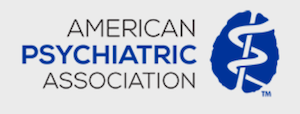NMDA Antagonists for Treatment of Catatonia with Delirium
Delirium-catatonia has been successfully treated with NMDA antagonists.

When patients experience delirium in addition to catatonia, the combination presents 2 problems for the treating psychiatrist, Kamalika Roy MD, of the University of Michigan, Department of Psychiatry, told an audience at the Annual Meeting of the American Psychiatric Association (APA) in San Diego.
Referencing the Diagnostic and Statistical Manual of Mental Disorders, Fifth Edition (DSM-5), Roy noted that catatonia due to another medical condition cannot be diagnosed exclusively in the context of delirium. “As a result, the combination of catatonia and delirium is often coded as unspecified catatonia, which results in underrecognition of catatonia,” he said, resulting in delays in diagnosis and treatment of the combined disorder.
Continuing, Roy said, “Further, the use of antipsychotics such as haloperidol to treat delirium can actually worsen the catatonia. However, the typical use of benzodiazepines such as lorazepam to treat catatonia can worsen the delirium. It’s a bit of a Catch-22 for the physician.”
Roy outlined steps for typical current best practice in treating the combination of catatonia and delirium. “Step one is treatment with lorazepam at lower than typical doses to avoid worsening the delirium. Step two is electroconvulsive therapy (ECT), which is by far the most effective treatment for any catatonic symptoms, irrespective of their etiology.”
However, access to ECT or obtaining consent for the therapy can be problematic, leading to treatment delays. The third step in Roy’s outline involves the use of memantine, an N-methyl-D-aspartate (NMDA) antagonist. Roy urged the audience to move to this step quickly when ECT is not available or possible.
Roy said that the use of NMDA antagonists for catatonia delirium is based on the idea that blocking NMDA receptors reduces glutamate excitotoxicity, which in turn resolves the gamma-aminobutyric acid (GABA) hypofunction observed in catatonia.
Roy presented 4 different cases of delirium-catatonia that were successfully treated with NMDA antagonists in patients who were not able to access ECT for various reasons. The cases included patients with diagnoses that included schizophrenia, unspecified depression, major depressive disorder (MDD), and schizoaffective disorder.
“Catatonia symptoms presented concurrently while patients were in delirium. Treatment of the presumed cause of delirium was pursued, but catatonia symptoms persisted,” he said.
However, regarding success in these cases of treating delirium-catatonia with NMDA antagonists in the absence of ECT, Roy cautioned the audience, “Causal inferences cannot be drawn, as these are only observational reports, so we have to use caution in interpreting the results. Also, the antipsychotic haloperidol was used as needed for agitation symptoms of delirium in case 2, and the mood stabilizer valproate was used as needed for mania-like symptoms in case 3. In addition, we started NMDA antagonist treatment at variable points of time in the progress of the catatonia.”
Roy concluded by telling the assembled physicians, “Lorazepam, which is otherwise the first line of therapy, is often not useful because of the risk of worsening delirium. The clinical evidence presented here of the successful use of NMDA antagonists for the specific subgroup of catatonia that presents with delirium draws further attention to the potential role of NMDA agonists in treatment of this combination. However, this evidence is anecdotal. Systematic comparison on NMDA antagonists with treatment as usual would be appropriate to test this hypothesis.”